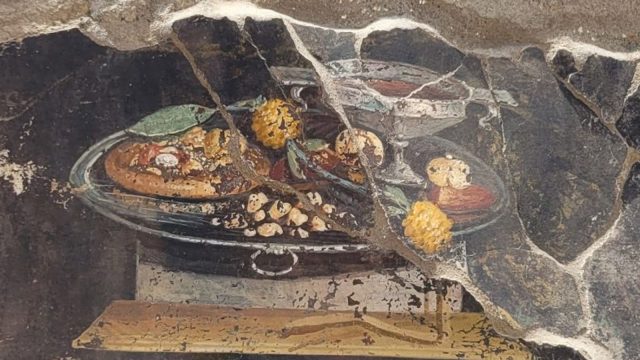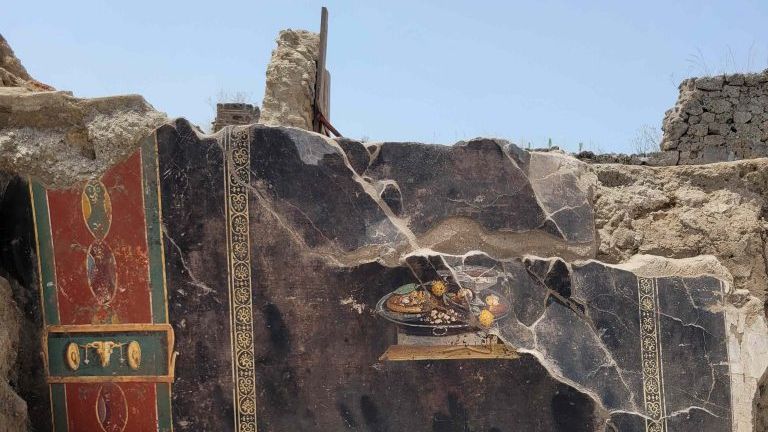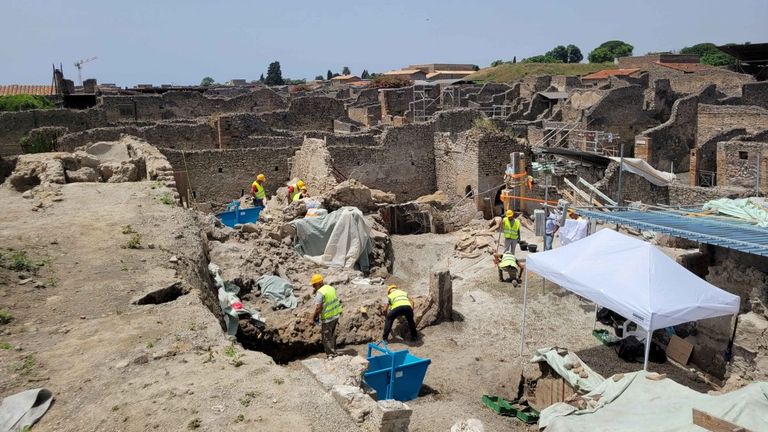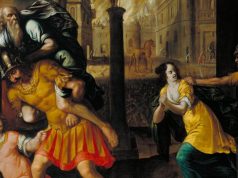A 2,000-year-old painting uncovered in Pompeii could show a “distant ancestor” to the modern pizza, archaeologists have said.
The art was discovered on the wall of an ancient house during an excavation – but the food it depicts looks slightly different from your Friday night takeaway.
Iconic ingredients such as tomato and mozzarella are nowhere to be seen, and it appears the flat focaccia bread has been seasoned with spices instead.
And while a goblet of wine placed on the silver tray might be more familiar to 21st-century pizza lovers, most of us would choose a side of garlic bread over dried fruit.
The painting was discovered just 14 miles (23km) from Naples, where the traditional art of pizza making has been granted UNESCO protection.
Pompeii was destroyed by an eruption of Mount Vesuvius almost 2,000 years ago, but the site was not discovered until the 16th century.
Since January, there has been a burst of archaeological activity that is designed to halt years of decay and neglect.
The painting was discovered in the hall of a house that had a bakery attached to it.
“Pompeii never ceases to amaze, it is a casket that always reveals new treasures,” Italian culture minister Gennaro Sangiuliano said.
Read more from Italy:
Fury after tourist carves initials into Colosseum
Gabriel Zuchtriegel, the director of Pompeii’s archaeological park, believes the artwork reminds us of how far the humble pizza has come.
“How can we fail to think, in this regard, of pizza, also born as a ‘poor’ dish in southern Italy, which has now conquered the world and is also served in starred restaurants,” he said.
Almost a third of Pompeii remains buried under ash – meaning there will be countless other hidden gems that are worth quite a lot of dough.










![Stonebwoy holds star-studded party for ‘5th Dimension’ mega album [Video]](https://ghananewss.com/storage/2023/04/stonebwoy-partyy-100x75.jpeg)







